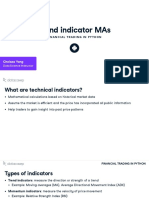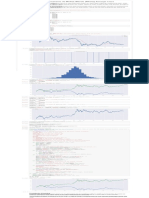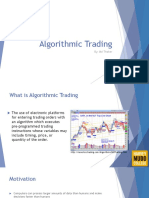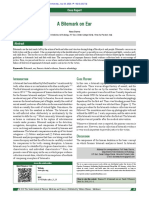0% found this document useful (0 votes)
87 views23 pagesTrade Backtest
This article demonstrates how to automate technical analysis and backtest trading strategies using Python, specifically leveraging various packages such as Pandas TA and BackTrader. It covers the process of obtaining financial data, creating technical indicators like Bollinger Bands, recognizing candlestick patterns, and implementing a simple trading strategy for backtesting. The article aims to simplify the workflow for users interested in systematic trading and AI-first finance.
Uploaded by
Khin YeeCopyright
© © All Rights Reserved
We take content rights seriously. If you suspect this is your content, claim it here.
Available Formats
Download as DOCX, PDF, TXT or read online on Scribd
0% found this document useful (0 votes)
87 views23 pagesTrade Backtest
This article demonstrates how to automate technical analysis and backtest trading strategies using Python, specifically leveraging various packages such as Pandas TA and BackTrader. It covers the process of obtaining financial data, creating technical indicators like Bollinger Bands, recognizing candlestick patterns, and implementing a simple trading strategy for backtesting. The article aims to simplify the workflow for users interested in systematic trading and AI-first finance.
Uploaded by
Khin YeeCopyright
© © All Rights Reserved
We take content rights seriously. If you suspect this is your content, claim it here.
Available Formats
Download as DOCX, PDF, TXT or read online on Scribd
/ 23


































































































